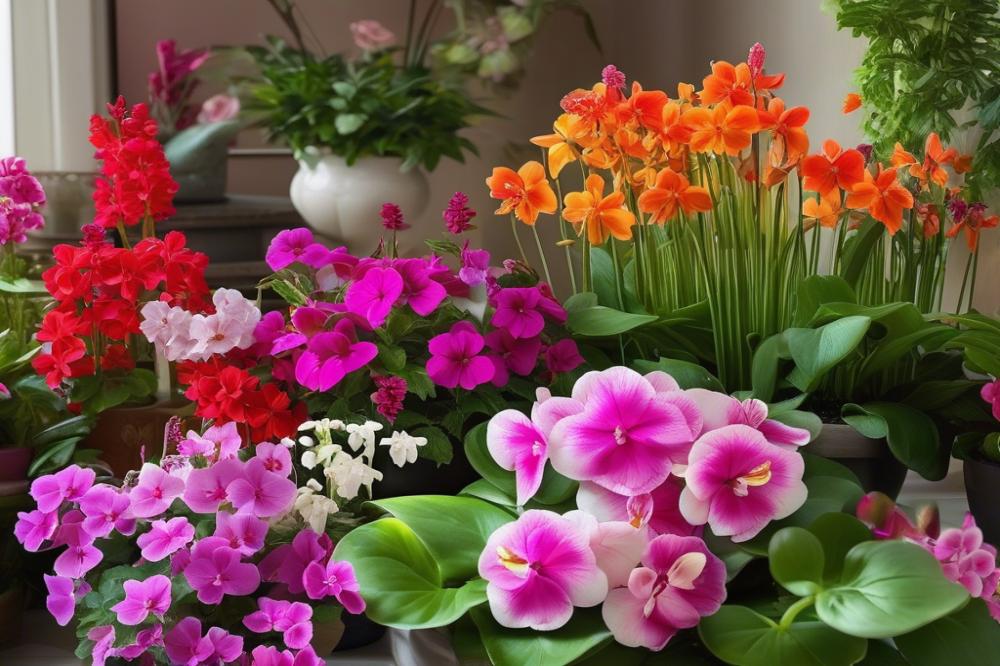Understanding the Popularity of Roses
Roses hold a special place in the hearts of gardeners around the world. Their beauty and fragrance make them a favorite choice for many. Flower lovers appreciate the wide range of colors and styles that these plants offer. Among rose varieties, two types stand out: Grandiflora and Hybrid Tea.
Both types showcase stunning blooms, but they have different characteristics that appeal to various gardening styles. When considering landscape design or simply adding to a garden, understanding these differences is vital.
Roses require specific care to thrive. Bloom characteristics, plant health, and proper flower care play essential roles in ensuring roses flourish. Knowing how to properly prune roses is equally important. This knowledge helps avoid problems that can arise if the wrong techniques are applied.
Delving into rose breeding reveals why these variations exist. The hybrid roses’ development focused on enhancing particular traits, leading to some unique blooms. Each type offers distinct advantages, influencing their place in any garden. This understanding can aid gardeners in making informed decisions, resulting in more beautiful and robust rose plants.
What are Grandiflora Roses?

Definition and Description
Grandiflora Roses are a type of rose that combines traits from Hybrid Tea Roses and floribundas. This category offers a unique blend of features, presenting large blooms and the ability to produce multiple flowers on a single stem. They make excellent cut flowers, adding beauty to bouquets and arrangements. Gardeners appreciate their robustness and the elegance they bring to any landscape design.
Origin and Breeding History
The development of Grandiflora roses began in the mid-20th century. Breeders aimed to create a rose that would thrive in gardens while retaining the classic beauty of larger flowers. This hybridization produced a new class of roses, capturing the attention of many rose enthusiasts. Their introduction into the horticultural scene was met with enthusiasm, as they offered more choices for gardening lovers.
Common Varieties of Grandiflora Roses
Several popular varieties exist within this rose category. ‘Queen Elizabeth’ is among the most recognized, famed for its stunning pink blooms. Another notable variety, ‘Gold Medal,’ showcases vibrant yellow flowers and vigorous growth. Each of these varieties stands out for specific traits, catering to diverse preferences in the gardening community. Rose plants like these can enhance any garden’s appeal and charm.
Bloom Characteristics: Size, Color, and Form
Bloom characteristics are a significant aspect of what makes Grandiflora roses appealing. Generally, their flowers are large, often exceeding five inches in diameter. Colors range from soft pastels to vibrant hues, providing numerous options for gardeners. The form of the blooms is typically cup-shaped, resembling classic roses. Caring for these flowers involves understanding their specific needs for optimal plant health and continuous blooming throughout the season. Regular pruning roses helps maintain their shape and encourages new growth, maximizing their beauty in the garden.
What are Hybrid Tea Roses?

Hybrid tea roses are a popular type of rose plant that gardeners often choose for their beauty and variety. These roses are known for their long stems and exquisite blooms, which are typically large and have a classic cupped shape. They combine attributes from two distinct rose varieties in their breeding.
Origin and Breeding History
The origins of hybrid tea roses trace back to the late 19th century in Europe. Breeders aimed to create roses that combined the powerful fragrance of old garden roses with the elegant qualities of tea roses, resulting in a stunning new type. Over the years, selective breeding has led to the creation of countless rose varieties, each differing in color and form.
Common Varieties of Hybrid Tea Roses
Many well-known varieties exist within the hybrid tea classification. Some prominent examples include ‘Peace,’ a yellow and pink bloom famous for its beauty, and ‘Mr. Lincoln,’ which showcases deep red petals and an intoxicating scent. Other notable options are ‘Chicago Peace’, recognized for its vibrant colors, and ‘Double Delight’, known for its unique bi-color blooms. Each of these varieties thrives when given proper care, including adequate sunlight and appropriate watering.
Bloom Characteristics: Size, Color, and Form
In terms of bloom characteristics, hybrid tea roses stand out. They tend to have large flowers, often measuring six inches across. Colors range from deep reds and bright yellows to soft pinks and whites. Hybrids typically feature a pleasing symmetry in their form, with many blooms unfolding in a perfect spiral. These attributes make them ideal for landscape design, as their striking appearance enhances any garden space.
To properly care for hybrid tea roses, gardening tips include regular watering and careful attention to plant health. Pruning roses is essential for maintaining their shape and encouraging new growth. Regular deadheading after blooms fade helps to promote additional flowering. Notably, these actions boost overall vigor and longevity.
Key Differences Between Grandiflora Roses and Hybrid Tea Roses

Growth Habits and Plant Health
Hybrid tea roses are known for their tall and straight growth. These rose plants typically reach a height of 3 to 5 feet. They often display a single, long stem topped with a bloom. Grandiflora types, on the other hand, tend to be more shrubby, growing taller in clusters. This growth habit allows for more robust clusters of flowers to develop. Both types benefit from careful rose breeding, which aims to enhance disease resistance. Regular checks for pests and diseases are crucial for maintaining plant health. Providing adequate sunlight and well-draining soil will help both varieties thrive.
Flower Production and Blooming Cycles
Rose varieties in the hybrid tea group generally produce stunning single flowers. Each bloom opens gradually and can last for several days. Blooming occurs in cycles, often with several flushes throughout the summer. In contrast, the grandiflora variety usually produces large clusters of blooms. This feature provides a more lush appearance in gardens. Their flowers open at a similar rate, creating a visual spectacle. Both types respond well to deadheading, which encourages new blooms. Flower care practices like fertilization can impact the quality and frequency of blooming cycles.
Landscape Design Applications
When planning a garden layout, hybrid tea roses offer vertical lines ideal for borders or accenting pathways. Their elegant stems add structure and shape to more formal setups. Grandiflora roses, however, work wonderfully in mass plantings. Their bushy growth can fill spaces effectively, creating vibrant focal points. Additionally, both types can be suitable for containers, but hybrid teas often require more space. Consider the garden’s overall design when choosing between these options. Each rose’s unique characteristics can complement various themes and styles.
Gardening Tips for Each Type
For hybrid tea roses, early pruning is essential. Cutting back stems in late winter prepares the plant for the upcoming growth season. Fertilizing these roses with a balanced fertilizer can enhance their bloom characteristics. For grandiflora roses, light pruning helps maintain their bushy form. Encourage air circulation around the plants to prevent disease. Observing the watering needs will also pay off, as these varieties prefer soil that retains moisture without becoming soggy. Providing mulch can benefit both types by regulating soil temperature and moisture. Taking time to learn about each type’s specific needs will yield the best results in your garden.
Growing and Cultivating Grandiflora Roses

Planting and Soil Requirements
Plant Grandiflora roses in well-drained soil to promote robust growth. A slightly acidic pH level between 6.0 and 6.8 is ideal. Amending the soil with organic matter like compost boosts nutrients. Choose a sunny spot that receives at least six hours of sunlight daily. When planting, dig a hole twice the width of the root ball. Space each plant around three feet apart to allow airflow. Selecting healthy rose plants from a reputable nursery is crucial for long-lasting blooms.
Watering and Fertilization Techniques
Time your watering to keep the soil consistently moist but not soggy. Watering deeply encourages strong root development. Drip irrigation systems work well for these roses, as they help focus moisture at the base. During the growing season, fertilize with a balanced rose fertilizer every four to six weeks. Look for specialized products for roses, as they usually cater to their specific needs. Organic options like fish emulsion or bone meal can also benefit rose varieties. Always note the product instructions for the best results.
Flower Care and Maintenance
Regular deadheading helps promote continuous blooms. Remove faded flowers at the base to encourage new growth. Monitoring for pests is important, as common foes include aphids and spider mites. Consider using insecticidal soap if infestations arise. Maintaining plant health can also involve checking for diseases such as powdery mildew. Good air circulation around the plants minimizes fungal issues. Mulching around the base can help retain soil moisture and suppress weeds, which can compete with your rose plants.
Pruning Roses: Best Practices for Grandiflora Roses
Pruning roses is essential for overall health and bloom characteristics. Begin in early spring, just before new growth starts. Start by removing dead, damaged, or crossing canes. Focus on opening up the center of the plant to improve airflow and light penetration. Cut back live branches to encourage new shoots; aim for a 45-degree angle when making cuts. Clean your pruning shears to prevent disease spread between rose plants. Always wear gloves to protect your hands from thorns. Regular pruning helps shape the plant and enhances its beauty in landscape design.
Growing and Cultivating Hybrid Tea Roses
Planting and Soil Requirements
Hybrid tea roses thrive in well-drained soil rich in organic matter. Start by selecting a sunny location since these plants need plenty of light. A pH level ranging from 6.0 to 6.8 is ideal for optimal growth. Mixing compost or well-rotted manure into the planting hole can enhance soil quality. Space each plant about two feet apart to allow for air circulation. Good spacing helps prevent diseases that can affect rose plants.
Watering and Fertilization Techniques
Watering should be done deeply but infrequently. Rose plants benefit from soaking under the soil, promoting strong root development. Aim for approximately one inch of water per week, adjusting for rainfall. When it comes to fertilization, using a balanced rose fertilizer can lead to healthy blooms. Apply fertilizer in early spring and again in mid-summer for best results. Over-fertilizing can lead to lush foliage but fewer flowers.
Flower Care and Maintenance
Flower care involves several important tasks. Regularly deadhead spent blooms to encourage new growth. This encourages the plant to produce more flowers. Additionally, monitor for signs of pests or diseases, as hybrid roses can be susceptible to these issues. Mulching around the base helps retain moisture, regulate temperature, and suppress weeds. Keep an eye on your rose varieties, as some may require specific care routines.
Pruning Roses: Best Practices for Hybrid Tea Roses
Pruning roses is essential for maintaining plant health and encouraging new growth. Perform this task in early spring before new growth begins. Start by removing dead or diseased wood. Focus on shaping the plant by cutting back about one-third of the stems to promote an open center. Use sharp, clean tools to make smooth cuts, minimizing damage to plant tissue. Furthermore, aim to leave strong, healthy canes to support blooms. This practice enhances both bloom characteristics and plant vitality.
Wrapping Up the Differences
When comparing Grandiflora roses with Hybrid Tea roses, several key differences and similarities come to light. Both types produce stunning blooms that many gardening enthusiasts cherish. Grandiflora roses generally feature larger clusters of flowers on taller stems, while Hybrid Tea roses are known for their classic single blooms on sturdy, upright stems. Colors, fragrance, and overall hardiness can vary across both categories, giving gardeners plenty of options.
Selecting between these rose types can be a personal choice based on your garden’s look and feel. Consider the growing space you have available. If you desire an elegant, structured garden with focused blooms, Hybrid Tea varieties may be more suitable. However, if you prefer a more relaxed, romantic style with abundant flowers, then exploring Grandiflora types might be worthwhile. Think about how much maintenance you’re willing to do as well. Both groups have their charms and challenges.
As you dive into the world of roses, take time to explore various rose varieties. Each type has its characteristics and beauty. Embrace the joys of gardening while learning new tips for plant care. Whatever you decide, the satisfaction of nurturing plants and watching your garden flourish is unmatched. Let your love for roses bloom fully.



